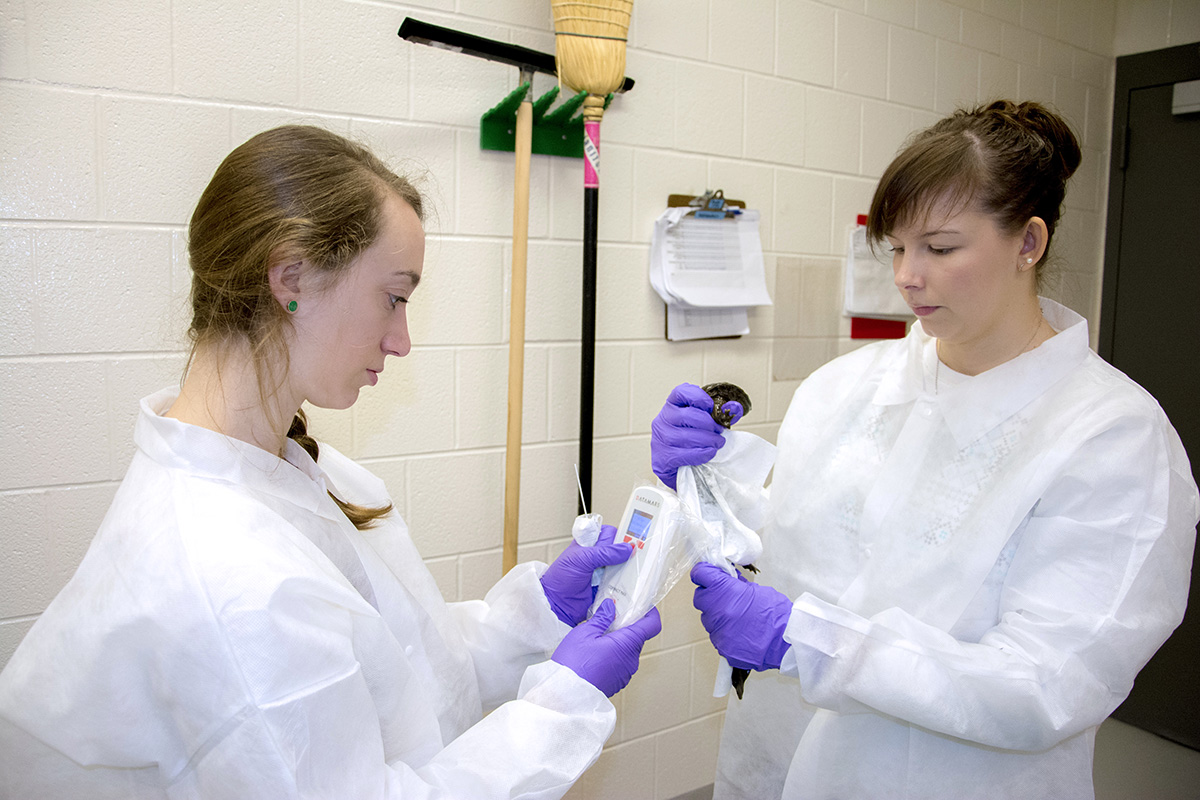Wildlife program gets $4.8 million to track NYS disease
By Krishna Ramanujan
From infectious diseases like West Nile virus to noninfectious issues like bald eagle deaths from lead ammunition, the detection, tracking and management of wildlife diseases is essential for the health of wild animals, pets and humans.
To maintain such services, the New York State Cooperative Wildlife Health Program – a partnership among Cornell’s College of Veterinary Medicine and the New York State Department of Environmental Conservation (DEC) to provide surveillance, diagnosis and management of wildlife diseases – will receive $4.8 million over the next five years.
The funds are a renewal of the program, which began in 2010, with an increase of $1 million over the last contract.
The program addresses a statewide need for coordinated wildlife disease surveillance and management. Veterinarians and wildlife disease specialists at Cornell have teamed with DEC wildlife biologists and managers in Albany to develop a comprehensive program to respond to wildlife disease reports from professionals and the public around the state.
In an effort to uphold a “one health” philosophy that recognizes the interconnectedness of human, animal and environmental health, the program areas focus on: disease surveillance and management; developing policy; being prepared to respond to disease outbreaks; staff training and development; communication; information management; research; and veterinary health services.
Through the program, the DEC sends samples of diseased animals to Cornell’s Animal Health Diagnostic Center (AHDC) for testing and analysis, and the results are reported to the DEC. Cornell partners offer a picture of what diseases are common in the state, if pathogens are new to the state, and if a situation could threaten wildlife populations, humans or domestic animals.
“We are seeing more diseases now and that may be because we have a lot more stressors on wildlife than we’ve had before,” said Elizabeth Bunting, wildlife veterinarian with the AHDC and a Wildlife Health Program team member. Stressors could include climate changes, environmental degradation, human population increases and transport practices that introduce diseases, she said.

Over the first five years, the AHDC examined more than 6,000 animals, including birds, mammals, amphibians and reptiles. Since the program began, team members have diagnosed and responded to outbreaks of epizootic hemorrhagic disease in 2011, red-tailed hawk rodenticide intoxications and canine distemper in skunks and raccoons in 2012, songbird salmonella in 2013 and waterfowl winter mortality on the Great Lakes in 2014 and 2015. The team is working to diagnose the deaths of hundreds of diamondback terrapins on Long Island, possibly from algal saxitoxins.
Along with monitoring West Nile virus and white nose syndrome in bats, the team is developing a plan for chronic wasting disease prevention in New York’s deer. The disease, which is related to mad cow disease, has only been detected once in New York, in 2005, though it has spread in many other states and has led to a 10 percent decline in the number of deer hunters in those areas. A Wildlife Health Program economic analysis showed that a similar decline in hunters in New York state would equal a loss of $150 million per year in revenue from license sales, taxes, tourism, wages, and recreation and food sales.
“Since setting up the surveillance methodologies through our program, we are in a better position now to find introduced or emerging and reemerging pathogens and diagnose them sooner than if we weren’t here,” said Krysten Schuler, a wildlife disease ecologist at the ADHC and a Wildlife Health Program team member.
“Early intervention is really the only way that we can control disease in wildlife populations. You really have to be on your game to find things and react quickly and that’s something Cornell can provide to the DEC,” Schuler said.
The program is supported by Pittman Robertson funds through a U.S. Fish and Wildlife Service grant and matching funds from the NYS DEC. The Pittman Robertson act, also known as the Federal Aid in Wildlife Restoration act, takes an 11 percent tax on ammunition and firearms used for sport hunting and earmarks the proceeds, which are distributed to the states for wildlife restoration.
Media Contact
Get Cornell news delivered right to your inbox.
Subscribe